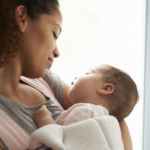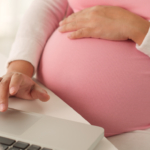While depression is a relatively common occurrence during the perinatal period, suicide is less common in pregnant and postpartum women than in other populations. Because suicide in this population is rare, we have limited information regarding risk factors for suicide during the perinatal period. A new study published in Lancet Psychiatry attempts to identify risk factors in this population.
This study analyzed data collected from 1997–2012 as part of the United Kingdom National Confidential Inquiry into Suicides and Homicides by People with Mental Illness. This database did not include all suicides; it included only suicides by people (age ? 10 years) who had contact with psychiatric services within the previous year. The researchers focused on women between the ages of 16 and 50 years who died by suicide during pregnancy or the first postpartum year (perinatal suicides) and compared this group to a similarly aged women who died by suicide outside of this timeframe (non-perinatal suicides).
A total of 4785 women died by suicide. A minority of those suicides occurred during the perinatal period (98 or 2%). Compared with non-perinatal women, women who died by suicide in the perinatal period were more likely to have a diagnosis of depression (adjusted odds ratio [OR] 2.19; p<0·001) and less likely to be receiving any active treatment (OR=0.46) at the time of death. Women who died by suicide within the perinatal period were also more likely to be younger and married (OR=4.46; p<0·0001), with shorter illness duration (OR=2.93; p<0·001).
So how can we use this information to help us identify the women at greatest risk for suicide? First of all, it must be noted that this study analyzed risk factors only in women who had contact with psychiatric services during the past year. Thus, women who had not any contact with psychiatric services would not have been included. Most importantly, this analysis may not include women with their first episode of postpartum psychosis, and we know that this population carries a very high risk of suicide.
In other populations at higher risk for suicide, predicting who is at greatest risk for suicide continues to be a challenge. Thus, it will be even harder to reliably predict risk in a population where suicide is so rare. What makes the perinatal population different from other populations is that they often discontinue or change treatment in the setting of pregnancy and the postpartum period. This study did indicate that not being in active treatment increases risk for perinatal suicide. So one could surmise that maintaining treatment during pregnancy and the postpartum period, or at the very least closely monitoring women who elect to discontinue treatment with medication, may help to diminish risk for perinatal suicide.
Ruta Nonacs, MD PhD
Khalifeh H, Hunt IM, Appleby L, Howard LM. Lancet Psychiatry. 2016 Mar;3(3):233-42.







Leave A Comment